OVERVIEW
Just beyond Oilgate lies St David’s Well which is reputed to have been blessed by St David on an Irish visit. Tradition holds that pilgrims fill a second bottle with water from the well that is believed to contain curative properties, and convey it to St Davids.
After crossing the River Slaney, you may wish to visit the Irish National Heritage Park, a 35-acre outdoor museum showcasing 9,000 years of Irish History from the Stone Age period to the Norman invasion in 1169. The Park has an example of an Ogham Stone, which depicts the oldest form of Celtic writing. These stones are also seen throughout Pembrokeshire, which shows the ancient connections between Ireland and Wales. The park also has a re-creation of a Celtic monastic settlement from the time of Aidan and David, including a high cross, church and farmstead with beehives.
Rejoin the route by following the Three Rocks Trail, passing a Famine Wall before ascending Forth Mountain to the Windgap Rocks, which offer views over the serenely beautiful lake at Carrigfoyle Quarry.
Your journey continues to the landscaped grounds of Johnstown Castle, home to a renowned apiary (a place for bees). Allow plenty of time to explore this interesting site. Leave Johnstown Castle on the road past the research centre buildings, then swing right to end at Piercestown village.
HIGHLIGHTS / PLACES OF INTEREST
St David's Well
St David’s Well has been a place of pilgrimage for centuries with people drawn to the reputed healing waters. The well is an unusual key shape with a few steps taking the visitor down towards the well waters. The most popular time to visit is on St David’s Day which is celebrated on 1st March.
Carrigfoyle Quarry
Carrigfoyle Quarry is a popular spot with a picturesque lake edged by cliffs and forests. The site of a previous quarry, the basin began to fill with groundwater when work finished here to form the beautiful lake. Like all quarry lakes, care must be taken and swimming is not recommended due to the coldness of the water from the great depth.
Johnstown Castle
Johnstown Castle offers much of interest to the visitor with a Gothic-Revival Castle, the Irish Agricultural Museum and extensive landscaped gardens. The castle grounds are home to a renowned apiary, since the sunny climate makes it ideal for the propagation of bees.
Famine Wall
Along the Three Rocks Trail, you will pass a Famine Wall on the right. These walls were constructed during the Irish Famine of the 1840s as relief works run by the church and local landowners. The Famine had a huge impact on Ireland with 1 million dying and 1 million emigrating.
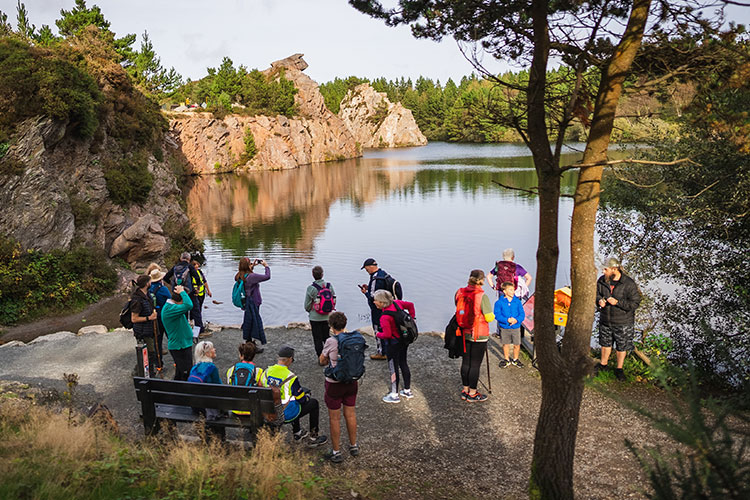
Forth Mountain

Forth Mountain
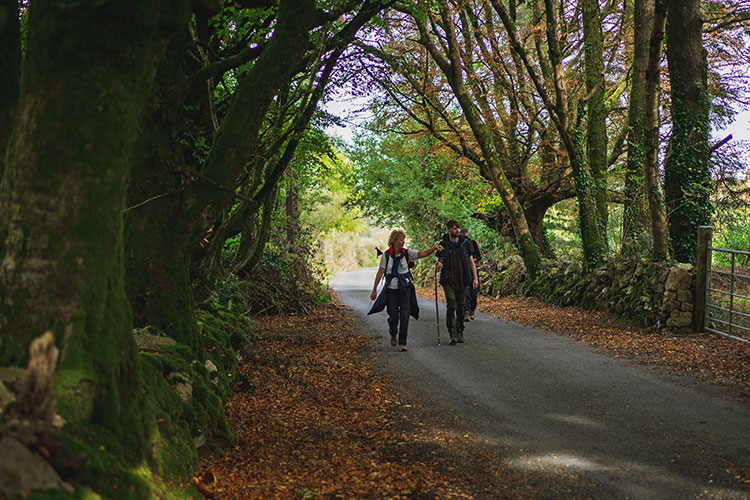
Pilgrims
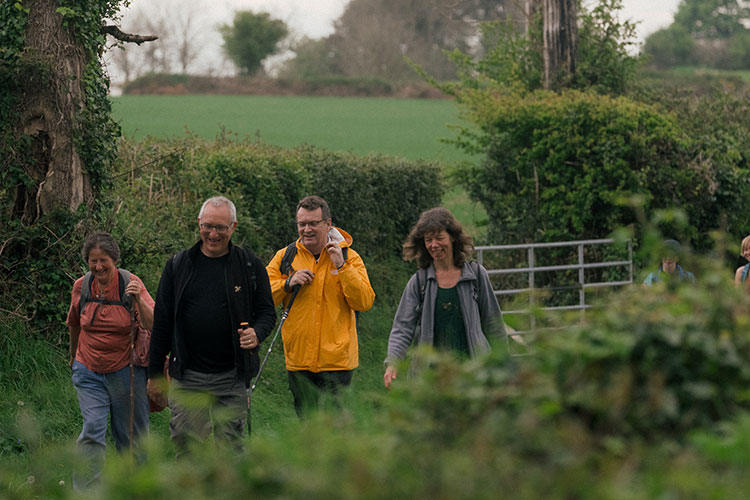
Pilgrims
Photo Credit - Will Philpin
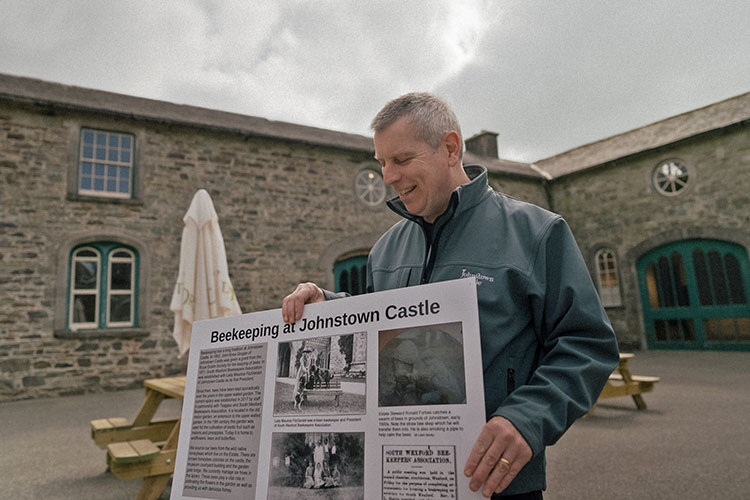
Johnstown
Photo Credit - Will Philpin
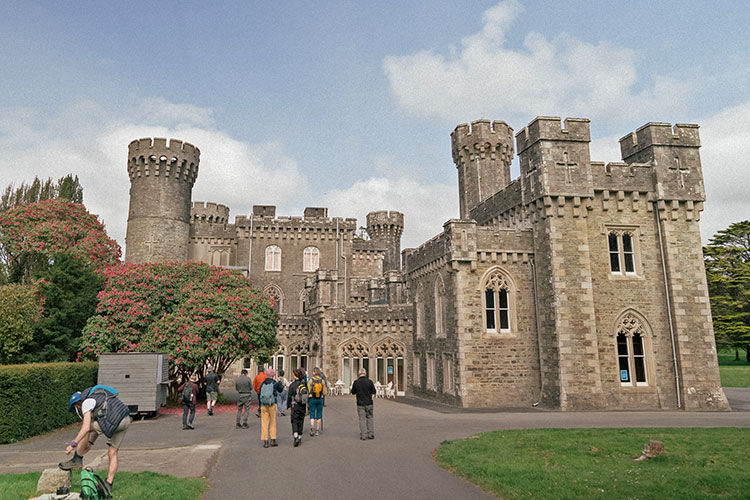
Johnstown
Photo Credit - Will Philpin
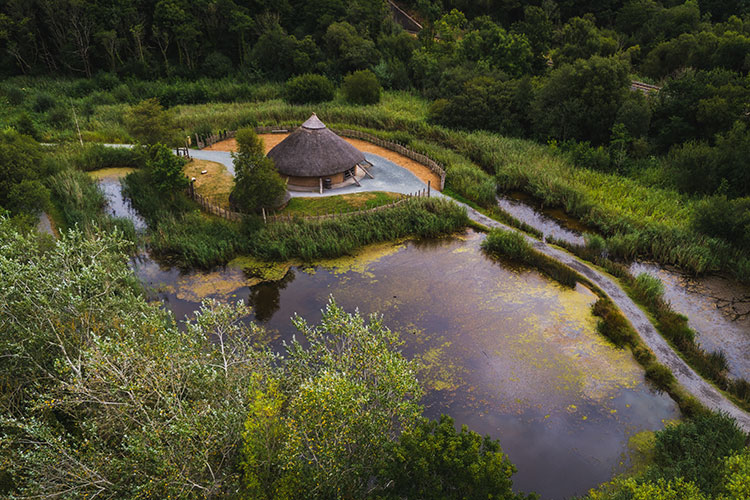
National Heritage Park
Photo Credit - Celtic Routes
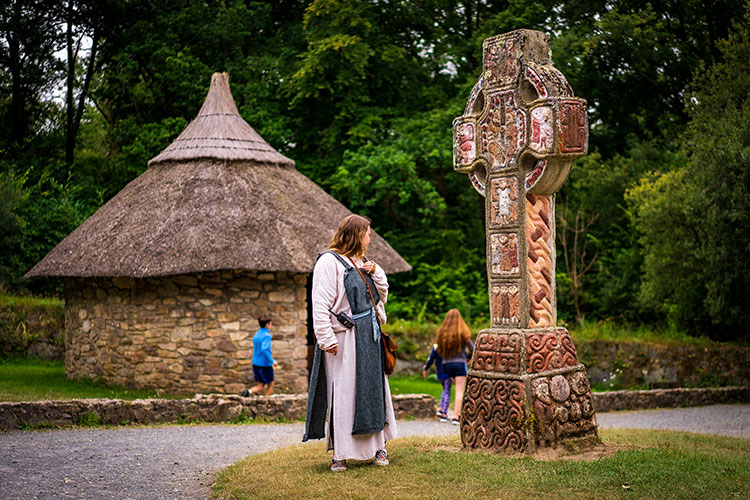
National Heritage Park
Photo Credit - Celtic Routes
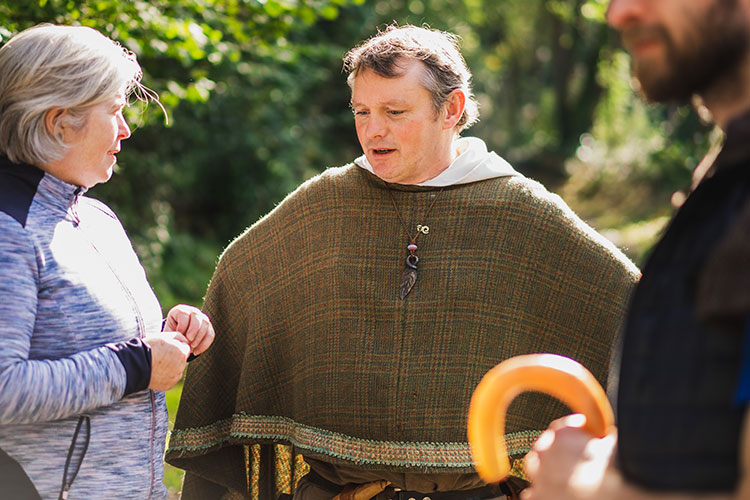
National Heritage Park
Photo Credit - Celtic Routes
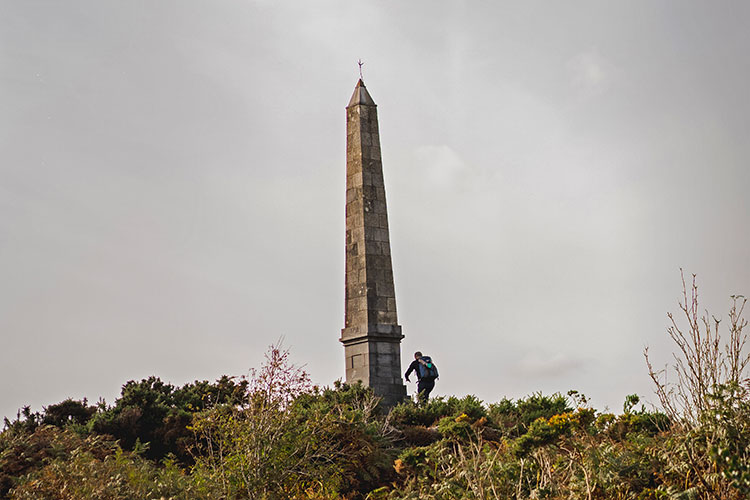
3 Rocks Battle Monument
The Battle of Three Rocks
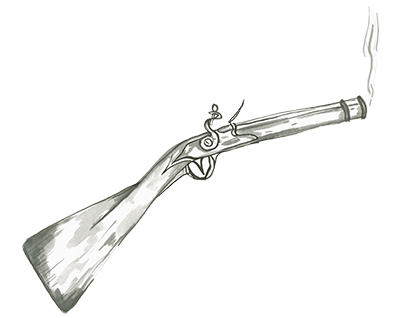
Following rebel victories at Oulart Hill and Enniscorthy, the 1798 Rebellion against British rule in Ireland spread throughout the south-east. With Wexford town now under threat, a column of British troops set out from Duncanoon Fort in the west of the county to bolster the defence of the town. Part of the column pushed ahead of the main detachment and was ambushed by the rebel United Irishmen. Caught by surprise, the British were routed, with the survivors retreating to Duncannon. This put the rebels in a strong position to seize Wexford.
When General Maxwell, commander of the Wexford garrison, learned of the defeat at Three Rocks and that no reinforcement would be arriving from Duncannon, he retreated from the town. This allowed the rebel forces to enter Wexford unchallenged, which marked the high point of their campaign.
On your walk over Forth Mountain, you will pass above the Three Rocks battle site, which made an ideal ambush location. This is now marked by an impressive monument which was completed in 1952.
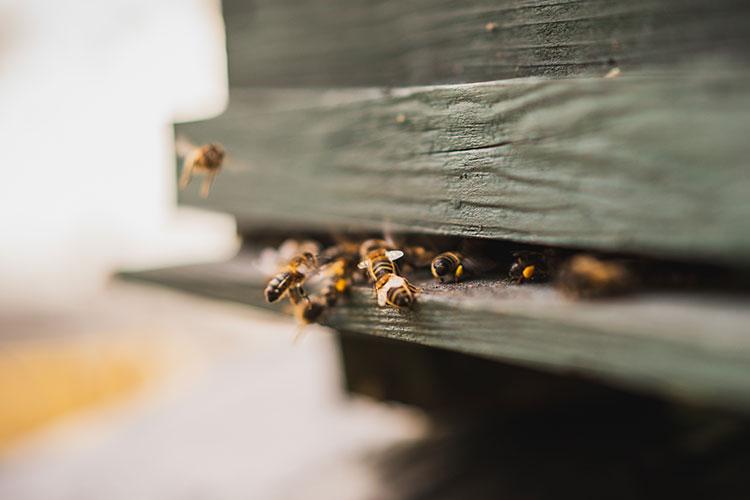
BEES
First written down in the 7th Century, there were local laws stating that should a bumble bee take nectar from a neighbour’s land, recompense had to then be provided. But payment was delayed until the 4th year when the first swarm had to be given to the neighbour.
Bees were to be treated like any other member of the family and for them to be told good and bad news. This included letting them know if there was a death in the family, and sharing the funeral food with them.
Our ancestors were very clear about the importance of the humble bee.
(Thanks to the folkloric website Stair na h’Éireann for the above)
Sign up for our Newsletter
Be the first to know about guided events being offered along the route and all the latest developments as we head for a pilgrimage launch in 2023.

